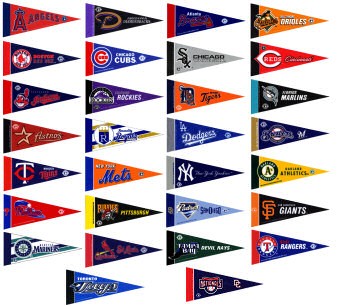Speculation about possible realignment scenarios in Major League Baseball tends to shake opinions like late-October leaves, dancing randomly to the ground . . . often with as much weight as the breeze that carries those leaves. I’m here to help you draw the line between what’s possible and what’s as likely as a Nats-Jays World Series. As long as Bud Selig’s in charge, though, the most reasoned analysis should be considered yet another shaky leaf. But read on.

Any consideration of “mixing” the leagues — and this includes creating two 15-team leagues or conferences — requires an evaluation of the designated hitter and the value of inter-league play. With baseball split evenly among its 30 teams, the schedule would require at least one inter-league (or inter-conference) series all the time. If this became reality, dancing around the DH debate would become foolish. A National League hosts games with no DH while NL teams use a DH in American League parks? The idea is as foolish as it reads . . . and is currently the way of things for the few inter-league games each team plays. A decision would have to be made: DH for all teams, all the time, or no DH, ever. And this is the third rail of modern baseball debate. Don’t plan on the current commissioner going anywhere near it.
And what would constant inter-league play do to the swell of interest that limited inter-league action has brought (for 15 years now)? You have to believe the Marlins facing the A’s in August would be as compelling as it sounds today. Making such a series an annual necessity hardly seems like a boost in value for a season-ticket buyer. A’s-Giants is now a part of the baseball summer, but to stretch the inter-league match-ups to conform to some kind of scheduling balance would be misguided. When inter-league play arrived, fans had to accept their team sometimes playing a dramatically more challenging schedule than a chief rival. That toothpaste is out of the tube.
A single 15-team league (or conference) without divisions is ludicrous. Count the turnstiles in Houston when the Astros are battling to move out of 11th place in late July. What MLB should consider is a return to two divisions in each league, to again give weight to winning a division. When I’m named commissioner, I’ll have two eight-team divisions in the National League and two seven-team divisions in the American League. Wild cards — more toothpaste — wouldn’t go away, but division winners would host every game they play against a team that finished no better than second. Baseball has to redefine the value of winning a division title, and beyond a single home game in a five-game series. (No fair, cry ye fans of the best second-place team in the league? Well . . . win your division next year!)
MLB should look at the 2010 American-North division race in the Pacific Coast League. Despite having the three best records in the 16-team PCL, Memphis, Iowa, and Omaha found themselves battling over the last two weeks of August with a single, solitary playoff spot up for grabs. The Redbirds had to win 11 of their last 14 games just to tie the Cubs atop the division. (This is where MLB should stop looking. Instead of the two teams facing each other in a one-game playoff, the Redbirds advanced based on a tie-breaker.) The point is, fans in three PCL cities were desperate to see their team win, knowing second place was no better than last. It’s called a pennant race, and it’s been dead these 17 years (the last two-division-per-league season was 1993).
Selig will likely take the path of least resistance. A second wild-card team added in each league (giving baseball 10 playoff teams), a one-game playoff between runners-up, and three division winners hoping their rotation lines up against the momentum of the “wild card winner.” Give the new system a decade, and we’ll debate possibilities again.